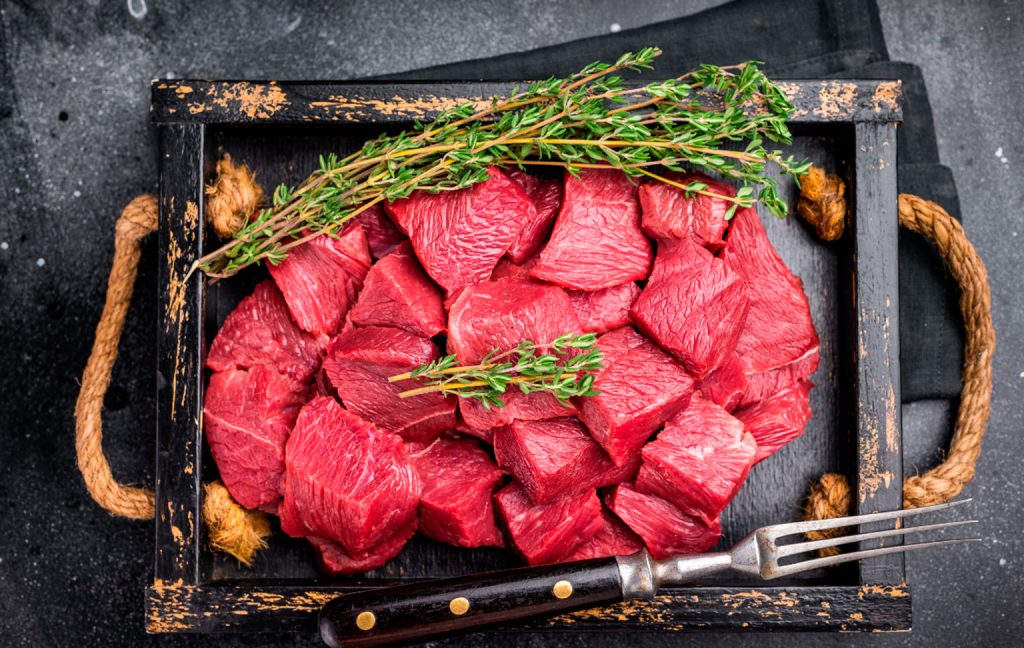
The benefits of game meat: a natural, sustainable and healthy food
Since ancient times, game meat has been part of the human diet. Today, far from being a thing of the past, it remains a highly valued option due to its high nutritional value, sustainability and direct connection to nature.
More and more people recognise that responsible hunting not only helps maintain the balance of ecosystems, but also provides an excellent source of protein.

An exceptional nutritional profile
Game meat, both large game (such as deer, wild boar and fallow deer) and small game (rabbit, partridge, quail, etc.), stands out for its excellent nutritional profile:
- It is very rich in protein, with between 20 and 26 grams per 100 grams, and also contains all the essential amino acids the body needs.
- It is very low in fat, normally less than 5%, considerably less than pork or beef.
- It provides healthier fats, as these animals live in the wild and feed naturally, which improves their fatty acid profile, especially omega-3.
- It is a source of iron and zinc, especially haem iron, which is easily absorbed by the body and is very beneficial in cases of anaemia or for people with high physical demands.
For all these reasons, game meat is a very interesting option for those seeking a balanced diet that is rich in protein, low in fat and has a high nutritional value.
Natural origin and no additives
Unlike some meats that come from intensive farming, game meat does not undergo rapid fattening processes or exposure to industrial feed, antibiotics or hormones. Wild animals feed directly on what nature offers them: acorns, roots, shoots, insects, wild berries… The flavour: deeper, more complex and variable depending on the area and time of year.
This can be seen in several aspects:
- The flavour: more intense, with nuances that change depending on the area and the time of year.
- The texture: firmer and with less fat.
- The composition: free of traces of medication or artificial additives.
For all these reasons, game meat is a pure, natural food with no industrial additives. And when it comes from regulated and responsible hunting, its traceability is fully guaranteed.
Sustainable hunting = sustainable meat
Obtaining game meat under responsible hunting models has a lower environmental impact than conventional livestock farming:
- It does not consume feed or water for cultivation.
- It does not require intensive facilities.
- It does not emit greenhouse gases on an industrial scale.
In addition, regulated hunting plays a fundamental role in controlling populations that can cause ecological imbalances or damage to agriculture. When this control translates into food, it closes a cycle of sensible and ethical use.
Culinary versatility and gourmet value
Game meat is no longer just an ingredient in traditional cuisine, but has found its way onto haute cuisine menus. Its versatility allows it to be enjoyed in both traditional recipes, such as stews, marinades and casseroles, and in more contemporary dishes, such as tatakis, carpaccios and gourmet burgers.
Its intense flavour and seasonal nature make it a highly prized product among chefs and food lovers who value ingredients with history and authenticity. Because game meat is not just food: it is territory, landscape and tradition served on a plate.
Respect, utilisation and ethics
Cooking game meat is also a way of showing respect for the animal. Nothing is wasted: the finest cuts are used, but also the offal, bones for stock and even, in some cases, the skin. This holistic approach reflects an ethical and conscious way of eating, which values both the natural environment and the role of the hunter.
Beyond its unique flavour, game meat is a complete, sustainable food with strong cultural roots. It is a coherent choice for those who seek to consume protein responsibly, connecting tradition, health and respect for nature. Choosing game meat is not just a choice in the kitchen, it is also a way of seeing the world and relating to what we eat.
- Big Game (4)
- Chiruca (1)
- Fairs (2)
- Hunting dogs (4)
- News (10)
- Relevant information (33)
- Small Game (1)